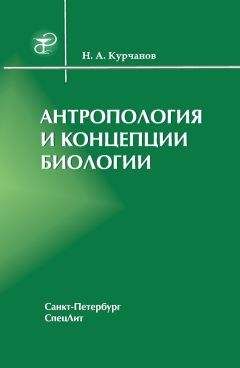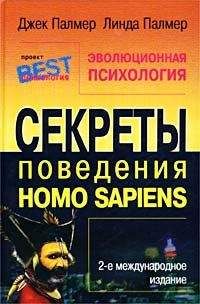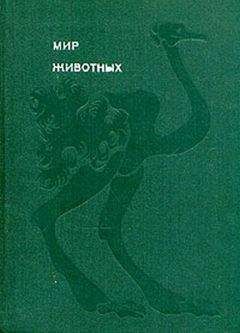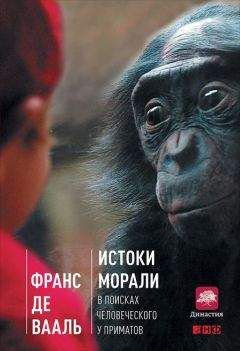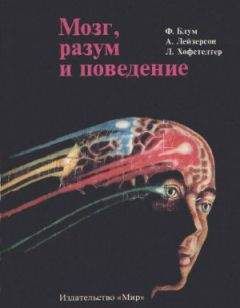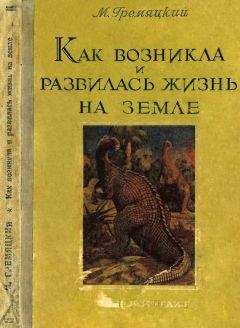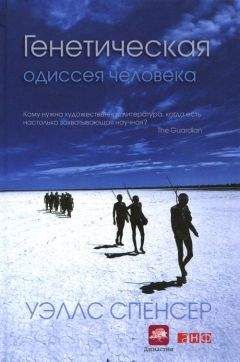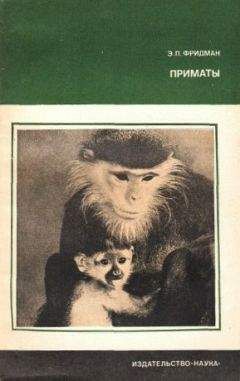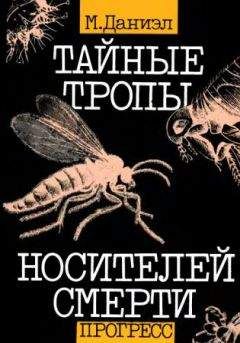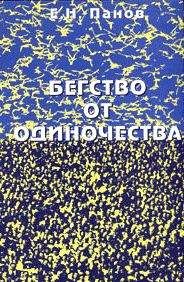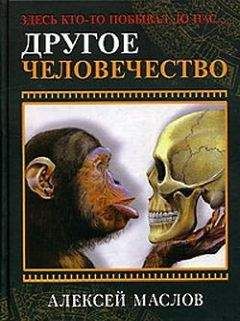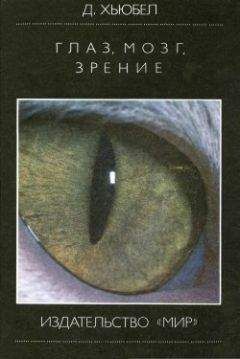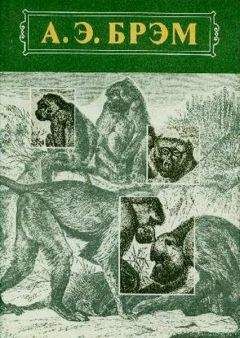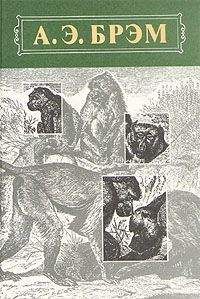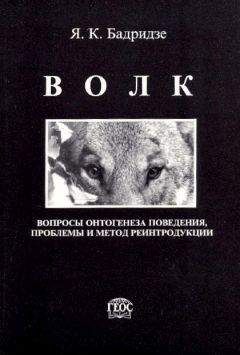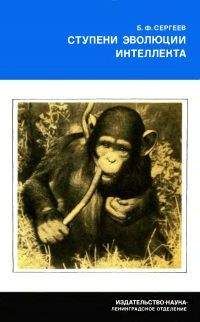Станислав Дробышевский - Шанс для приматов
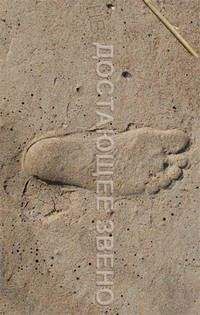
Скачивание начинается... Если скачивание не началось автоматически, пожалуйста нажмите на эту ссылку.
Жалоба
Напишите нам, и мы в срочном порядке примем меры.
Описание книги "Шанс для приматов"
Описание и краткое содержание "Шанс для приматов" читать бесплатно онлайн.
Главы из книги известного российского антрополога, посвященные древним млекопитающим. Описываются разные их группы и оценивается потенциальная их возможность пойти по пути увеличения и усложнения мозга. Что позволило нашим далеким предкам использовать свой шанс и превратиться в нас с Вами, и что помешало другим группам млекопитающих сделать это…
В комплексе с высоким уровнем социальности это дало приматам возможность развития интеллекта вплоть до человеческих высот и, хочется верить, бóльших.
Литература
Длусский Г.М. Некоторые соображения о начальных этапах антропогенеза // Вопросы Антропологии, 1980, вып. 66, стр. 85–90.
Кэрролл Р. Палеонтология и эволюция позвоночных. Т.2. М., Мир, 1993а, 283 с.
Кэрролл Р. Палеонтология и эволюция позвоночных. Ред.: В.И. Громова. Т.3. М., Мир, 1993б, 312 с.
Лопатин А.В. Строение черепа Archaeorycteseuryalis sp. nov. (Didymoconidae, Mammalia) из палеоцена Монголии и систематическое положение семейства // Палеонтологический журнал, 2001, № 3, сс.97-107.
Лопатин А.В. Особенности развития фауны мелких млекопитающих Азии в раннем палеогене // Экосистемные перестройки и эволюция биосферы. М., ПИН РАН, 2004, Вып.6, сс.87–96.
Основы палеонтологии. Т.13. М., Государственное научно-техническое издательство литературы по геологии и охране недр, 1962, 423 с.
Archibald J.D. et Averianov A. Phylogenetic analysis, taxonomic revision, and dental ontogeny of the Cretaceous Zhelestidae (Mammalia: Eutheria) // Zoological Journal of the Linnean Society, 2012, V.164, pp.361–426.
Backwell L.R. et d’Errico F. Evidence of termite foraging by Swartkransearly hominids // PNAS, 2001, V.98, № 4, pp.1358–1363.
Barrow E., Seiffert E.R. et Simons E.L. A primitive hyracoid (Mammalia, Paenungulata) from the early Priabonian (Late Eocene) of Egypt // Journal of Systematic Palaeontology, 2010, V.8, № 2, pp.213–244.
Bininda-Emonds O.R.P., Cardillo M., Jones K.E., MacPhee R.D.E., Beck R.M.D., Grenyer R., Price S.A., Vos R.A., Gittleman J.L. et Purvis A. The delayed rise of present-day mammals // Nature, 2007, V.446, pp.507–512.
Bloch J.I. et Silcox M.T. New basicrania of Paleocene-Eocene Ignacius: re-evaluation of the Plesiadapiform-Dermopteran link // AJPhA, 2001, V.116, pp.184–198.
Boyer D.M., Evans A.R. et Jernvall J. Evidence of Dietary Differentiation Among Late Paleocene — Early Eocene Plesiadapids (Mammalia,Primates) // AJPhA, 2010a, V.142, pp.194–210.
Boyer D.M., Prasad G.V.R., Krause D.W., Godinot M., Goswami A., Verma O. et Flynn J.J. New postcrania of Deccanolestes from the Late Cretaceous of India and their bearing on the evolutionary and biogeographic history of euarchontan mammals // Naturwissenschaften, 2010b, V.97, pp.365–377.
Cartmill M. Arboreal adaptations and the origin of the order Primates // The functional and evolutionary bioligy of primates. Ed.: R. Tuttleed. Chicago, Aldine, 1972, pp.97-122.
Court N. et Mahboubi M. Reassessment of Lower Eocene Seggeurius amourensis: aspects of primitive dental morphology in the mammalian order Hyracoidea // Journal of Paleontology, 1993, V.67, № 5, pp.889-893
De Bast E., Sige B. et Smith Th. Diversity of the adapisoriculid mammals from the early Palaeocene of Hainin, Belgium // Acta Palaeontologica Polonica, 2012, V.57, № 1, pp.35–52.
Gheerbrant E. Paleocene emergence of elephant relatives and the rapid radiation of African ungulates // PNAS, 2009, V.106, № 26, pp.10717-10721.
Gheerbrant E., Sudre J. et Cappetta H. A Palaeocene proboscidean from Morocco // Nature, 1996, V.383, pp.68–71.
Gingerich P.D. Cranial anatomy and evolution of early Tertiary Plesiadapidae (Mammalia, Primates). Univ.Michigan, Papers on Paleontol., 1976, V.15, pp.1-140.
Gingerich P.D. Primate evolution // Mammals. Notes for a Short Course. Eds.: P.D. Gingerich et C.E. Badgley. Univ.Tennessee, Studies Geol., 1984, V.8, pp.167–181.
Gingerich P. Early Eocene bats (Mammalia: Chiroptera) and other vertebrates in freshwater limestones of the Willywood formation, Clark’s Fork Basin, Wyoming // Contributions of the Museum of Paleontology at the University of Michigan, 1987, V.27, pp.275–320.
Goswami A., Prasad G.V.R., Upchurch P., Boyer D.M., Seiffert E.R., Verma O., Gheerbrant E. et Flynn J.J. A radiation of arboreal basal eutherian mammalsbeginning in the Late Cretaceous of India // PNAS, 2011, V.108, № 39, pp.16333-16338.
Hamrick M.W., Rosenma B.A. et Brush J.A. Phalangeal morphology of the Paromomyidae (?Primates, Plesiadapiformes): the evidence for gliding behavior reconsidered // AJPhA, 1999, V.109, pp.397–413.
Hand S.J., Novacek M., Godthelp H. et Archer M. First Eocene bat from Australia // Journal of Vertebrate Paleontology, 1994, V.14, pp.375–381.
Hartenberger J.-L. Hypothèse paléontologique sur l’origine des Macroscelidea (Mammalia). Comptes Rendus de l’Académie des Sciences, Serie II, 1986, V.302, pp.247–249.
Henry A.G., Brooks A.S. et Piperno D.R. Microfossils in calculus demonstrate consumption of plants and cooked foods in Neanderthal diets (Shanidar III, Iraq; Spy I and II, Belgium) // PNAS, 2011, V.108, № 2, pp.486–491.
Hooker J.J. A primitive emballonurid bat (Chiroptera, Mammalia) from the earliest Eocene of England // Palaeovertebrata, 1996, V.25, pp.287–300.
Hooker J.J., Russell D.E. et Phélizon A. A new family of Plesiadapiformes (Mammalia) from the Old World Lower Paleogene // Palaeontology, 1999, V.42, № 3, pp.377–407.
Hu Y., Meng J., Wang Y., Li Ch. Large Mesozoic mammals fed on young dinosaurs // Nature, 2005, V.433, № 7022, pp.149–152.
Hutcheon J.M., Kirsch J.A. et Pettigrew J.D. Base-compositional biases and the bat problem. III. The questions of microchiropteran monophyly // Philosophical Transactions of the Royal Society of London, Series B, Biological Sciences, 1998, V.353, № 1368, pp.607–617.
Ji Q., Luo Zh.-X., Yuan Ch.-X., Wible J.R., Zhang J.-P. et Georgi J.A. The earliest known eutherian mammal // Nature, 2002, V.416, pp.816–822.
Ji Q., Luo Zh.-X., Yuan Ch.-X. et Tabrum A.R. A swimming mammaliaform from the Middle Jurassic and ecomorphological diversification of early mammals // Science, 2006, V.311, № 5764, pp.1123–1127.
Koenigswald von W. et Schierning H.-P. The ecological niche of an extinct group of mammals, the early Tertiary apatemyids // Nature, 1987, V.326, pp.595–597.
Kay R.F. et Cartmill M. Cranial morphology and adaptations of Palaeehthon naeimienti and other Paromomyidae (Plesladapoldea,? Primates), with a description of a new genus and species // JHE, 1977, V.6, pp.19–53.
Krause D.W. Were paromomyids gliders? Maybe, maybe not // JHE, 1991, V.21, pp.177–188.
Ladevèze S., Muizon de Ch., Beck R.M.D., Germain D. et Cespedes-Paz R. Earliest evidence of mammalian social behaviour in the basal Tertiary of Bolivia // Nature, 2011, V.474, pp.83–86.
Lilly J.C. The cetacean brain // Oceans, 1977, V.10, pp.4–7.
Lofgren D.L. The Bug Creek problem and the Cretaceous-Tertiary transition at McGuire Creek, Montana // University of California publications in geological sciences, 1995, V.140, pp.1-185.
Luo Zh.-X., Crompton A.W., Sun A.-L. A new Mammaliaform from the Early Jurassic and evolution of Mammalian characteristics // Science, 2001, New Series, Vol. 292, № 5521, pp.1535–1540.
Luo Zh.-X. et Wible J.R. A Late Jurassic Digging Mammal and Early Mammal Diversification // Science, 2005, V.308, pp.103–107.
Luo Z.-X.,Yuan Ch.-X., Meng Q.-J. et Ji Q. A Jurassic eutherian mammal and divergence of marsupials and placentals // Nature, 2011, V.476, pp.442–445.
MacPhee R.D.E., Cartmill M. et Rose K. D. Craniodental Morphology and Relationships of the Supposed Eocene Dermopteran Plagiomene (Mammalia) // Journal of Vertebrate Paleontology, 1989, V.9, № 3, pp.329–349.
Marshall L.G. et Muizon de C. The Dawn of the Age of Mammals in South America // National Geographic Research, 1988, V.4, № 1, pp.23–55.
Martin J.E., Case J.A., Jagt J.W.M., Schulp A.S. et Mulder E.W.A. A New European Marsupial Indicates a Late Cretaceous High-latitude Transatlantic Dispersal Route // Journal of Mammalian Evolution, 2005, V.12, № 3/4, pp.495–511.
Martin Th. Postcranial anatomy of Haldanodon exspectatus (Mammalia, Docodonta) from the Late Jurassic (Kimmeridgian) of Portugal and its bearing for mammalian evolution // Zoological Journal of the Linnean Society, 2005, V.145, pp.219–248.
Meng J., Hu Y., Wang Y., Wang X. et LiCh.A Mesozoic gliding mammal from northeastern China // Nature, 2006, V.444, pp.889–893.
Meredith R.W., Janecka J.E., Gatesy J., Ryder O.A., Fisher C.A., Teeling E.C., Goodbla A., Eizirik E., Simão T.L.L., Stadler T., Rabosky D.L., Honeycutt R.L., Flynn J.J., Ingram C.M., Steiner C., Williams T.L., Robinson T.J., Burk-Herrick A., Westerman M., Ayoub N.A., Springer M.S., Murphy W.J. Impacts of the Cretaceous Terrestrial Revolution and KPg Extinction on Mammal Diversification // Science, 2011, V.334, pp.521–524.
Mindell D.P., Dick Ch.W. et Baker R.J. Phylogenetic relationships among megabats, microbats,and primates(molecular systematics // PNAS, 1991, V.88, pp.10322-10326.
Moffat A.S. New fossils and a glimpse of evolution // Science, 2002, V.295, pp.613–615.
Muizon de C. et McDonald H.G. An aquatic sloth from the Pliocene of Peru // Nature, 1995, V.375, № 6528, pp.224–227.
Orkin J.D. et Pontzer H. The narrow niche hypothesis: gray squirrels shed new light on primate origins // AJPhA, 2011, V.144, pp.617–624.
Penkrot T.A., Zack Sh.P., Rose K.D. et Bloch J.I. Postcranial Morphology of Apheliscus and Haplomylus (Condylarthra, Apheliscidae): Evidence for a Paleocene Holarctic Origin of Macroscelidea // Mammalian Evolutionary Morphology: A Tribute to Frederick S. Szalay. Eds.: E.J. Sargis et M. Dagosto. 2008, pp.73-106.
Pettigrew J.D. Flying primates? Megabats have the advanced pathway from eye to midbrain // Science, 1986, V.231, № 4743, pp.1304–1346.
Pettigrew J.D., Maseko B.C. et Manger P.R. Primate-like retinotectal decussation in an echolocating megabat, Rousettus aegyptiacus // Neuroscience, 2008, V.153, № 1, pp.226–231.
Pettigrew J.D., Jamieson B.G., Robson S.K., Hall L.S., McAnally K.I. et Cooper H.M. Phylogenetic relations between microbats, megabats and primates (Mammalia: Chiroptera and Primates) // Philosophical Transactions of the Royal Society of London, Series B, Biological Sciences, 1989, V.325, № 1229, pp.489–559.
Prasad G.V.R., Verma O., Sahni A., Parmar V. et Khosla A. A cretaceous hoofed mammal from India // Science, 2007, V.318, № 5852, p.937.
Rinderknecht A. et Blanco R.E. The largest fossil rodent // Proceedings of the Royal Society, 2008, Ser.B, V.275, № 1637, pp.923–928.
Rydell J. et Speakman J.R. Evolution of nocturnality in bats — potential competitors and predators intheir early history. Biological Journal of the Linnaean Society, 1995, V.54, pp.183–191.
Sánchez-Villagra M.R., Aguilera O. et Horovitz I. The Anatomy of the World's Largest Extinct Rodent // Science, 2003, V.301, № 5640, pp.1708–1710.
Seiffert E.R. The oldest and youngest records of afrosoricid placentals from the Fayum Depression of northern Egypt // Acta Palaeontologica Polonica, 2010, V.55, pp.599–616.
Simmons N.B., Seymour K.L., Habersetzer J. et Gunnell G.F. Primitive Early Eocene bat from Wyoming and the evolution of flight and echolocation // Nature, 2008, V.451, pp.818–822.
Simons E.L., Holroyd P.A. et Bown Th.M. Early tertiary elephant-shrews from Egypt and the origin of the Macroscelidea // PNAS, 1991, V.88, pp.9734–9737.
Simpson G.G. The Tertiary lorisiform primates of Africa // Bulletin of the Museum of Comparative Zoology, 1967, V.136, pp.39–62.
Simpson G.G. The Tiffany fauna, Upper Paleocene.I. — Multituberculata, Marsupialia, Insectivora and?Chiroptera // American Museum Novitates, 1935, № 795, pp.1-19.
Smith Th., De Bast E. et Sigé B. Euarchontan affinity of Paleocene Afro-European adapisoriculid mammals and their originin the late Cretaceous Deccan Traps of India // Naturwissenschaften, 2010, V.97, pp.417–422.
Speakman J.R. The evolution of flight and echolocation in bats: another leap in the dark // Mammal Rev., 2001, Volume 31, No. 2, 111–130.
Sussman R.W. Primate Origins and the Evolution of Angiosperms // American Journal of Primatology, 1991, V.23, pp.209–223.
Szalay F.S. Mixodectidae, Microsyopidae, and the insectivore-primate transition // Bulletin of the American Museum of Natural History, New York, 1969, V.140, article 4, pp.193–330.
Szalay F.S. et Delson E. Evolutionary history of the Primates. New York, Academic Press, 1979.
Tabuce R., Coiffait B., Coiffait Ph.-E., Mahboubi M. et Jaeger J.-J. A new genus of Macroscelidea (Mammalia) from the Eocene of Algeria: a possible origin for elephant-shrews // Journal of Vertebrate Paleontology, 2001, V.21, № 3, pp.535–546.
Van Valen L. New Paleocene insectivores and insectivore classification // Bulletin of the American Museum of Natral History, New York, 1967, V.135, article 5, pp.217–284.
Veselka N., McErlain D.D., Holdsworth D.W.,EgerJ.L., Chhem R.K., Mason M.J., Brain K.L., Faure P.A. et Brock Fenton M. A bony connection signals laryngeal echolocation in bats // Nature, 2010, V.463, pp.939–942.
Walker A.C. True affinities of Propotto leakeyi Simpson, 1967 // Nature, 1969, V.223, pp.647–648.
Wells N.A. et Gingerich P.D. Review of Eocene Anthracobunidae (Mammalia, Proboscidea) with a new genus and species, Jozaria palustris, from the Kuldana Formation of Kohat (Pakistan) // Contributions from the Museum of Paleontology, The University of Michigan, 1983, V.26, № 7, pp.117–139.
West R.M. et Dawson M.R. Vertebrale Paleontology and the Cenozoic History of the North Atlantic Region // Polarforschung, 1978, V.48, № 1/2, pp.103–119.
Wible J.R., Rougier G.W., Novacek M.J. et Asher R.J. Cretaceous eutherians and Laurasian origin for placental mammals near the K/T boundary // Nature, 2007, V.447, pp.1003–1006.
Примечания
1
Название разделов введено для удобства навигации, т. к. в самой сетевой публикации они никак не обозначены.
Подписывайтесь на наши страницы в социальных сетях.
Будьте в курсе последних книжных новинок, комментируйте, обсуждайте. Мы ждём Вас!
Похожие книги на "Шанс для приматов"
Книги похожие на "Шанс для приматов" читать онлайн или скачать бесплатно полные версии.
Мы рекомендуем Вам зарегистрироваться либо войти на сайт под своим именем.
Отзывы о "Станислав Дробышевский - Шанс для приматов"
Отзывы читателей о книге "Шанс для приматов", комментарии и мнения людей о произведении.





